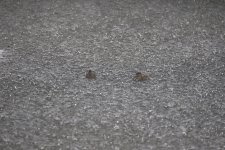Phil Andrews
It's only Rock and Roller but I like it

Yesterday evening at the Flashes Mike W reported:
3 Blackwit, Wood Sand, Dunlin, 2 Avocet, 5 Green Sand, 2 Common Sand, 3 Curlew, 13 Common Tern in the roost (9 adults + 4 juvs)
Also 8 Swift and Willow Warbler at the Moors Pool; juvenile GC Grebe still at the Sailing Pool.
3 Blackwit, Wood Sand, Dunlin, 2 Avocet, 5 Green Sand, 2 Common Sand, 3 Curlew, 13 Common Tern in the roost (9 adults + 4 juvs)
Also 8 Swift and Willow Warbler at the Moors Pool; juvenile GC Grebe still at the Sailing Pool.




